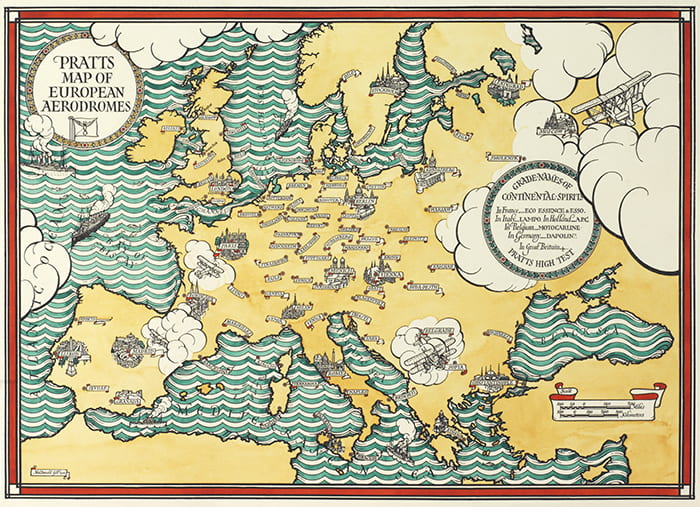
Chapter 13: Flight

“Pratts Map of the Schneider Trophy Course” (1929). Produced for the Pratts fuel company. Private collection. The winning Supermarine S6A seaplane is shown top left.
One of the most dramatic technical advances during Max Gill’s working life was the conquest of the air. From the moment that the Wright Brothers made the first ever powered flight in 1903, aircraft design developed at an astonishing pace. Only twelve years later, fighter aircraft were engaging in ‘dog-fights’ over the trenches of the Western Front.
After the First World War, flying became a popular hobby for the wealthy enthusiast and dozens of airfields, usually no more than grass strips, were created by flying clubs. Soon more substantial ‘aerodromes’ began to be established and Max Gill’s map of 1930 told pilots where to find them, while also advertising Pratts aviation fuel. Air races and record-setting captured the public imagination, as daredevil pilots such as Captain Ross Smith sought to fly further, higher and faster than the competition.

“Pratts Map of European Aerodromes” (1930). Produced for the Pratts fuel company. Private collection.
In the 1920s, the Schneider Trophy for seaplanes was hotly contested. Max Gill’s 1929 map of the Schneider Trophy Course commemorates Britain’s victory and includes the winning Supermarine S6A monoplane. It captured the trophy at an average speed of 328mph – even the RAF’s fastest fighter of the day could only manage 180mph! The S6A was designed by R.J. Mitchell, who went on to develop the aircraft into the legendary Spitfire fighter of World War Two.
